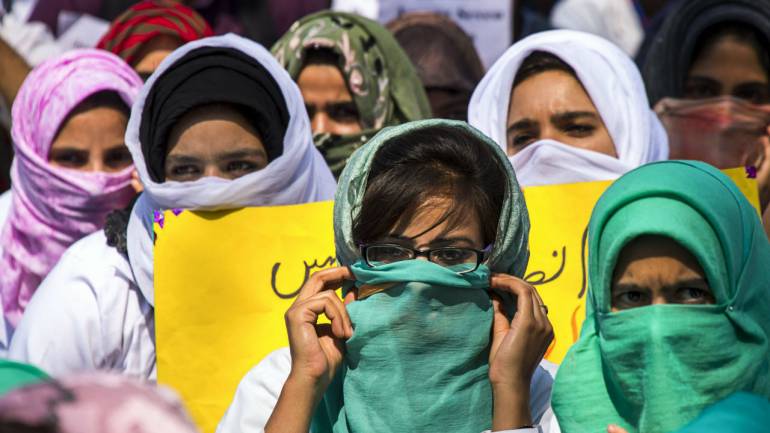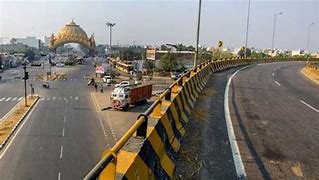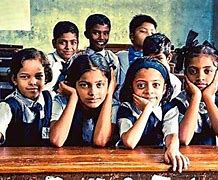Feature
Kashmiri students, including girls turned out of PG accommodations after Pulwama attack

Chandigarh: Over 100 Kashmiri students, including girls, have been turned out of their paying guest (PG) accommodations in Mullana village in Haryana’s Ambala district, forcing them to seek refuge with the authorities of a private deemed university where they are studying.
The Kashmiri students of the Maharishi Markandeshwar (deemed to be university) in Mullana, around 75 km from here, are being accommodated in the institution’s hostels, sources said.
With sentiments riding high against terrorists from Kashmir and Pakistan following the Pulwama terror attack, the Kashmiri students were ordered out of PG accommodations by respective landlords after the Mullana village sarpanch (headman) Naresh Kumar issued an ultimatum to PG owners to oust Kashmiri students.
With tension mounting in the village, the Haryana Police are keeping a close watch and have assured Kashmiri students about safety.
“We are talking to the Kashmiri students and assuring them. More force has been deployed in the village,” said Ambala district police chief Aastha Modi.
The village sarpanch on Friday issued an ultimatum to PG owners to oust Kashmiri students from accommodations within 24 hours. The ultimatum was issued after residents of the village took out a march against the Pulwama terror attack.
Kashmiri students including girls turned out of PG accommodations in Haryana after Pulwama attack:
Most of the Kashmiri students were asked to leave on Saturday. “The ultimatum came all of a sudden. We were asked by our landlords to vacate accommodation. We are scared,” a second year student from South Kashmir told media persons.
Some of the Kashmiri students have reportedly moved with friends in nearby places like Ambala, Chandigarh and Rajpura, sources said.
The village sarpanch justified the ultimatum to Kashmiri students. “After the Pulwama attack, some Kashmiri students posted comments on social media celebrating the deadly strike. We have to be cautious about such elements,” Kumar said, adding the ultimatum was not for all Kashmiri students, but for three students who were behind the unwarranted posts.
Meanwhile, the district authorities claimed that the situation was under control. “Students have been shifted to the university hostel for safety. We have warned the village sarpanch,” said Ambala Deputy Commissioner Sharandeep Kaur Brar.
Though the authorities have asked students to return to respective PG accommodations, the students have chosen to remain inside the campus for around four days.
Entertainment
Meghalaya Reserves Legalized Gambling and Sports Betting for Tourists

The State Scores Extra High on Gaming-Friendly Industry Index
Meghalaya scored 92.85 out of 100 possible points in a Gaming Industry Index and proved to be India’s most gaming-friendly state following its recent profound legislation changes over the field allowing land-based and online gaming, including games of chance, under a licensing regime.
The index by the UK India Business Council (UKIBC) uses a scale of 0 to 100 to measure the level of legalisation on gambling and betting achieved by a state based on the scores over a set of seven different games – lottery, horse racing, betting on sports, poker, rummy, casino and fantasy sports
Starting from February last year, Meghalaya became the third state in India’s northeast to legalise gambling and betting after Sikkim and Nagaland. After consultations with the UKIBC, the state proceeded with the adoption of the Meghalaya Regulation of Gaming Act, 2021 and the nullification of the Meghalaya Prevention of Gambling Act, 1970. Subsequently in December, the Meghalaya Regulation of Gaming Rules, 2021 were notified and came into force.
All for the Tourists
The move to legalise and license various forms of offline and online betting and gambling in Meghalaya is aimed at boosting tourism and creating jobs, and altogether raising taxation revenues for the northeastern state. At the same time, the opportunities to bet and gamble legally will be reserved only for tourists and visitors.
“We came out with a Gaming Act and subsequently framed the Regulation of Gaming Rules, 2021. The government will accordingly issue licenses to operate games of skill and chance, both online and offline,” said James P. K. Sangma, Meghalaya State Law and Taxation Minister speaking in the capital city of Shillong. “But the legalized gambling and gaming will only be for tourists and not residents of Meghalaya,” he continued.
To be allowed to play, tourists and people visiting the state for work or business purposes will have to prove their non-resident status by presenting appropriate documents, in a process similar to a bank KYC (Know Your Customer) procedure.
Meghalaya Reaches Out to a Vast Market
With 140 millions of people in India estimated to bet regularly on sports, and a total of 370 million desi bettors around prominent sporting events, as per data from one of the latest reports by Esse N Videri, Meghalaya is set to reach out and take a piece of a vast market.
Estimates on the financial value of India’s sports betting market, combined across all types of offline channels and online sports and cricket predictions and betting platforms, speak about amounts between $130 and $150 billion (roughly between ₹9.7 and ₹11.5 lakh crore).
Andhra Pradesh, Telangana and Delhi are shown to deliver the highest number of bettors and Meghalaya can count on substantial tourists flow from their betting circles. The sports betting communities of Karnataka, Maharashtra, Uttar Pradesh and Haryana are also not to be underestimated.
Among the sports, cricket is most popular, registering 68 percent of the total bet count analyzed by Esse N Videri. Football takes second position with 11 percent of the bets, followed by betting on FIFA at 7 percent and on eCricket at 5 percent. The last position in the Top 5 of popular sports for betting in India is taken by tennis with 3 percent of the bet count.
Local Citizens will Still have Their Teer Betting
Meghalaya residents will still be permitted to participate in teer betting over arrow-shooting results. Teer is a traditional method of gambling, somewhat similar to a lottery draw, and held under the rules of the Meghalaya Regulation of the Game of Arrow Shooting and the Sale of Teer Tickets Act, 2018.
Teer includes bettors wagering on the number of arrows that reach the target which is placed about 50 meters away from a team of 20 archers positioned in a semicircle.
The archers shoot volleys of arrows at the target for ten minutes, and players place their bets choosing a number between 0 and 99 trying to guess the last two digits of the number of arrows that successfully pierce the target.
If, for example, the number of hits is 256, anyone who has bet on 56 wins an amount eight times bigger than their wager.























